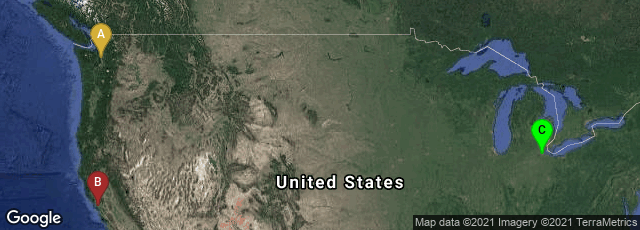
A: Seattle, Washington, United States, B: Novato, California, United States, C: Toledo, Ohio, United States
In January 2014 I finally succumbed to temptation, and curiosity, and purchased a hardcover book for one cent plus $3.99 postage from a bookseller in Toledo, Ohio through Amazon.com. Prior to this I had assumed that anything sold for such a low price had to be junk. However, the bookseller said the copy was in good condition and I decided to go for it.
The book arrived by media mail on January 21. So what did I get for this extremely low price? My order was for Cyberspace: First Steps, edited by Michael Benedikt and published by MIT Press in 1991. What I received was a hardcover book in an intact dust jacket. It shows signs of wear, but is clean internally and I would call it a good copy.
When I placed my order for the one cent copy I thought there was a certain irony in a bargain purchase of a book on the theoretical and conceptual issues involved in the design, use, and effect of virtual environments, since before the Internet no bookseller would have sold a book of this kind for one cent. My theory is after one online bookseller listed the book for one cent others joined in to meet the competition. There were several copies of this book listed for a penny; others were as expensive as $20 or more. My guess is that there is not that much difference between my one cent copy and some of the more expensive ones. It is a question of guessing what the right price is. Just as I previously hesitated to order such a bargain, not all buyers will trust the quality of a one cent purchase.
The business model for selling books for a penny on the Internet presumably means making a profit on the postage. The assumption is that these dealers get their books for nothing and may earn a dollar or two on the shipping. Amazon, of course, takes a small commission. The winners here are the consumer and Amazon, and maybe the postal service. Selling books for a penny does not seem like the best business plan to me.
Will I buy more books for a penny after this experience? Most certainly.